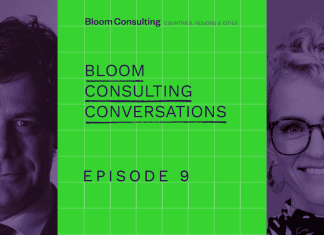A misrepresentation between how a country, city or region is perceived by others and what it is like in reality can be a significant hurdle to overcome.
Negative press, preconceived notions or a lack of accessible and up-to-date information are some of the reasons why some Country Brands are left with a perception-reality gap which can be difficult to change in the eyes of international audiences.
Developing a new, authentic brand and sharing those messages with the world requires a focused strategy together with deliberate initiatives from stakeholders including government, civil society and business. It’s a process that takes commitment and time.
Bloom Consulting has been developing strategies with Nation and Place Brands over the world for almost 20 years. In this article, the team has outlined three branding initiatives that work to help raise awareness and shift perceptions.
Getting started: Defining your brand
Before getting started, it’s important to understand how your brand is currently perceived by others. To help you, analyse all the words and ideas (positive and negative) typically used to describe your brand. If you don’t know, look online. Ask yourself why your target audiences (e.g. tourists, investors or students) would, or would not, be interested in engaging with your brand?
The second part is to brainstorm how you would like to be perceived as a brand. These answers should be aspirational but also reflect the true reality of your country, city or region. Once you have compared and contrasted where your brand is now (current perceptions) versus where you would like to be, develop different activities that could help to close the gap.
This is a strategic and creative process that takes time. For a more detailed step-by-step methodology, read The Central Idea: key to every successful Place Brand strategy.
Events – online and offline
Hosting social events, tradeshows or virtual seminars are an effective way to attract others and create a positive impression of a brand’s offering and personality. Colombia, for example, is a country that has leveraged the events industry, amongst others, to improve its brand and attract new audiences over the years.
It has actively marketed itself as a top Latin American destination for international business and cultural events. Its modern infrastructure, geographical accessibility in the LatAm region and diverse venue locations are some of reasons why Colombia is now well-known as an event destination.
Events such as sports competitions, tech summits, music festivals and trade shows are some of the types of events Bloom has seen work well. In addition, events like these often result in shareable content which increases reach on social media. For brands with minimal budgets, online events and seminars are a resourceful and easy way to begin.
Events increase visibility and awareness but to really make an impact and change perceptions, the initiatives must also be aligned with the Central Idea of a Country Brand.
Reimagining spaces and sharing ideas
Placemaking is about reimagining and reinventing how places such as a street, village or building is portrayed and perceived by the public. In the context of Nation and Place Branding, coming up with new ways a place or country uses and presents its assets can help to change perceptions. A practical example was recently illustrated at CityNationPlace.com.
Local artists recently turned the Baker Street Underground entrance in London into a colourful installation. This simple act changed the experience for thousands of commuters and tourists every day from a dreary and dull entrance into something bright and fresh.
The article on CityNationPlace describes the impact it had.
“This form of installation utilises existing infrastructure and draws it in to a wider placemaking piece that not only informs passers-by, but also creates shareable content that may draw a wider reach. It makes a walk through a quiet tunnel a memorable experience that links directly into the heritage of Baker Street”.
For more on Place Branding, have a look at Bloom’s recent article: Five signs you need a Place Brand strategy.
Defining what makes your brand unique and aligning that with others to create mutually beneficial outcomes can have a positive impact on perceptions.
Collaboration and partnerships between brands
Collaborating with other brands that share similar values and objectives is another way to build brand value. Defining what makes your brand unique and aligning that with others to create mutually beneficial outcomes can have a positive impact on perceptions.
Paris and London, for example, recently embarked on a multi-destination tourism campaign to attract new audiences. By highlighting the similarities as well as the differences between the two, both brands were able to leverage off each other’s marketing efforts and increase tourism.
Partnerships and brand collaborations can be especially important for smaller cities or places when resources are limited. Brand managers should consider how their assets and insights could complement other brands.
Two of the world’s most visited cities, Amsterdam and New York collaborated with surrounding destinations to encourage tourists to leave the big cities and see something new. These smaller destinations were positioned as ‘authentic’ and ‘undiscovered’ which worked particularly well with millennials and those travellers wanting a more local experience.
For brands working in tourism, are there ways to attract audiences to multiple destinations within a geographical radiance (which is especially important for regional destinations) as New York and Amsterdam did? Could policy measures increase cohesion and connectedness between destinations, for example, through transport links or tourism initiatives?
Changing perceptions over time
In an increasingly connected and digital world, there are many ways to bring brands to life and help redefine a Country Brand. For these initiatives to work, they must be aligned with an overarching strategy and communicated broadly to all stakeholders involved.
Good luck!
Published on 23.03.2020.








